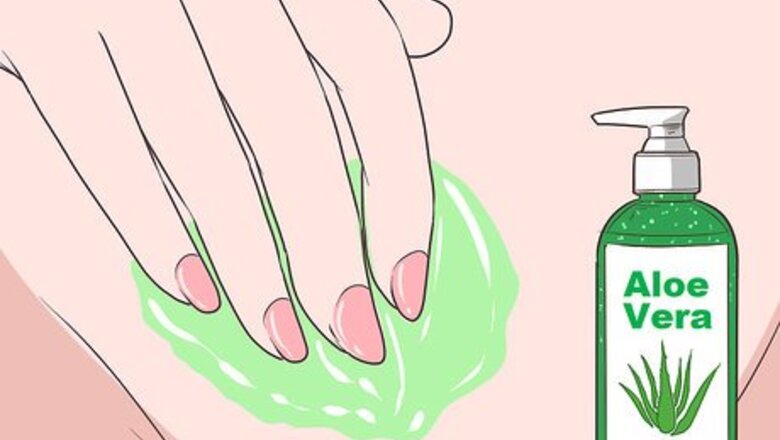
views
X
Trustworthy Source
American Academy of Dermatology
Professional organization made of over 20,000 certified dermatologists
Go to source
However, if your blister is in a sensitive area that’s prone to friction or large and painful, you have a few options to alleviate pain while allowing your blister to heal safely.
Cleaning and Protecting a Blister in a Sensitive Area
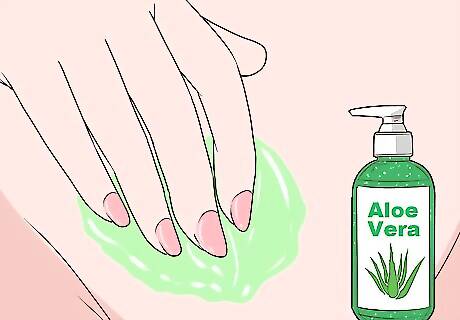
Apply aloe vera gel to prevent pain. If your blister is causing you pain, aloe vera acts as an anti-inflammatory and will also reduce redness. If your blister has popped, only use aloe vera on the skin surrounding the blister. Use a teaspoon of gel and do not use aloe vera for more than 10 days.
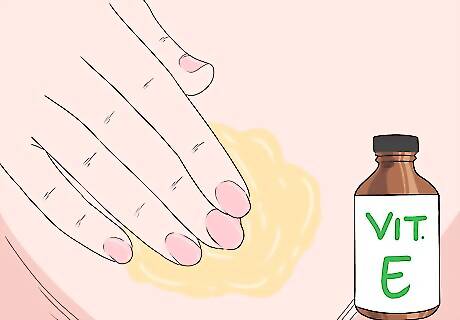
Apply vitamin E oil or cream to prevent scarring. Vitamin E helps repair skin. If you’re worried about scarring, this remedy will help your blister heal quickly. Only apply a few drops of vitamin E oil once a day.
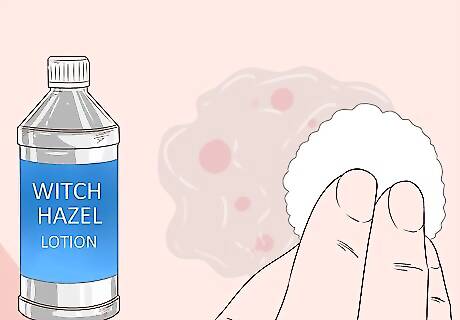
Dab it with witch hazel to keep it clean. The astringent in witch hazel will dry out your blister and keep it clean. Apply with a cotton ball. Soak the cotton ball thoroughly with witch hazel. Allow the blister to dry before covering.
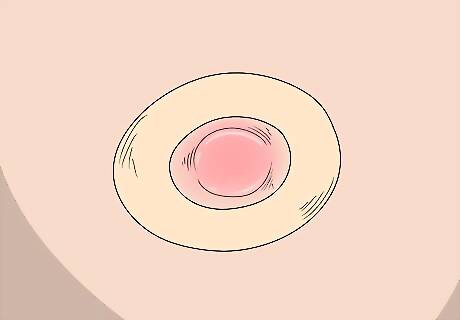
Pad it with moleskin. Cut a piece of moleskin into a donut shape and place it around your blister for additional protection. Moleskin is a thick cotton pad that can protect blisters from pressure. You’ll still need to cover it with a bandaid to protect it from infection.
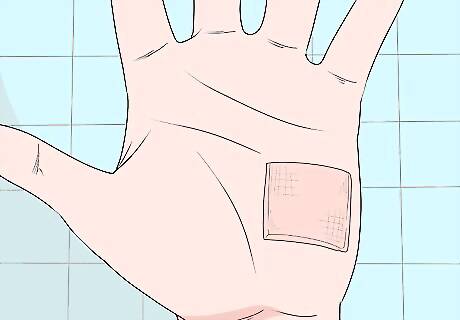
Cover the blister. If your blister is in a sensitive area like your hands or heel, you should cover it or pad it to keep it from popping. A regular adhesive bandage can protect your blister. Your blister needs airflow to heal, so make sure you allow airflow by raising the middle slightly. There are also bandages made to fit blisters.
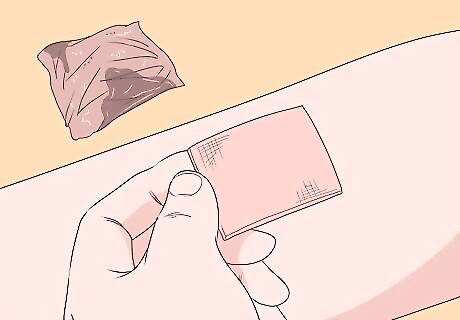
Check the area daily. Change the bandage if it gets dirty, wet, or loose. Keep an eye out for any signs of infection such as pus, swelling, red streaks, or warm skin.
Cleaning a Blister That Has Already Popped
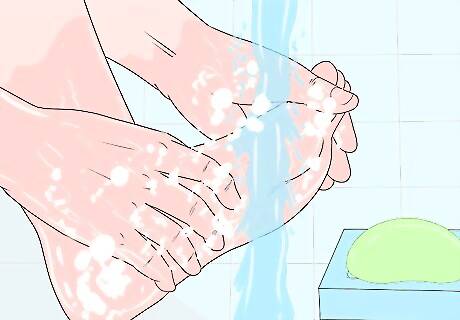
Wash your hands and the blister with soap and water. If your blister has popped, it’s more likely to get infected. Make sure your hands are clean before treating and covering the area. Do not use alcohol, iodine, or hydrogen peroxide to clean the blister, these are too harsh and could damage your skin.
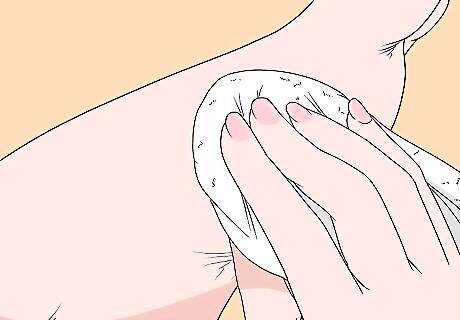
Smooth down the remaining skin. Make sure the blister has fully drained. Clean any remaining residue with a clean towel. Make sure the skin is completely dry after draining.
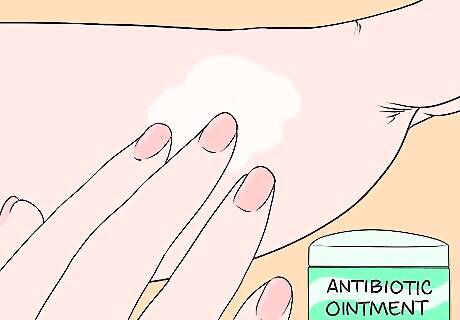
Apply antibiotic ointment. This will help prevent infection and aid healing. Apply a light layer of ointment over the entire blister.
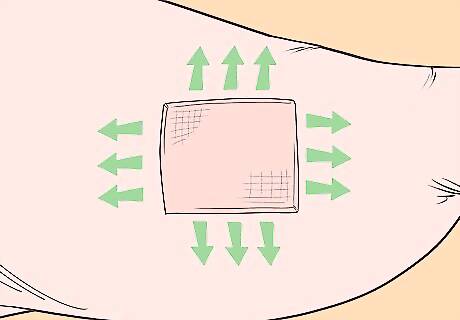
Cover the area with gauze or sterile bandage. Make sure the bandage is loose so the area has enough air to dry.
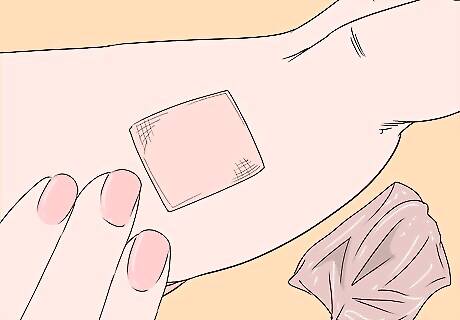
Check the area daily. Remove the bandage and look at how the blister is healing. Change the bandage if it gets dirty, wet, or loose. Keep an eye out for any signs of infection such as pus, swelling, red streaks, or warm skin.
Draining a Blister That’s Too Large or Painful
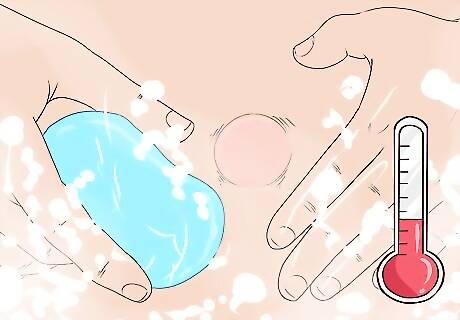
Wash the area with soap and warm water. If your blister is too large to be covered with a bandage or causing too much pain and you can’t protect it from friction, you’ll want to drain it safely while leaving the overlying skin intact.
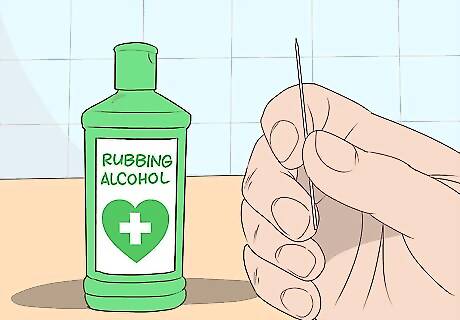
Sterilize a clean, sharp needle with water and rubbing alcohol. Use a brand new needle and make sure it’s cleaned thoroughly before use.
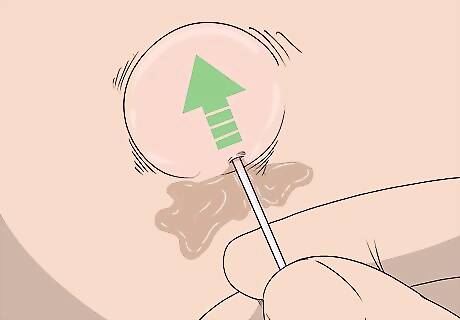
Puncture the blister near the edge. Make a small hole and gently push out the fluid. Do not rip or tear the remaining skin flap.
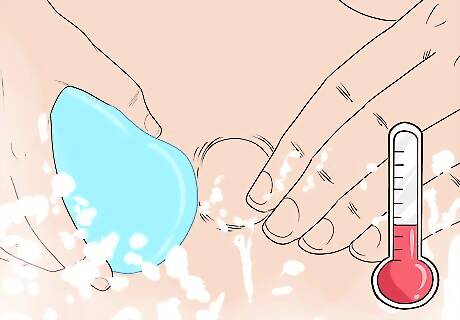
Wash the blister again with soap and water. Pat with a clean towel to dry. Smooth down any remaining skin and make sure the area is dry. Make sure to be gentle while washing the area, you don’t want to tear any skin while cleaning. Avoid picking at your blister so the skin underneath it can heal properly.
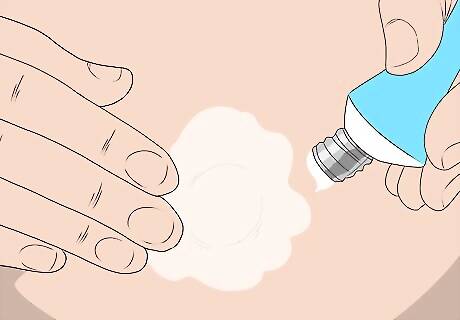
Apply antibiotic ointment. This will help prevent infection and aid healing. Apply a light layer of ointment over the entire blister.
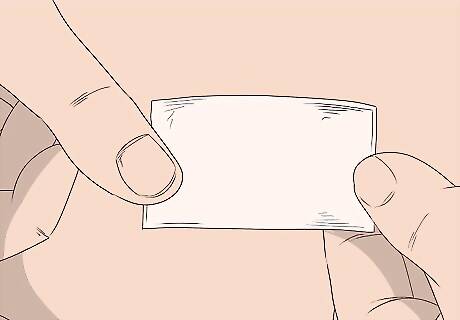
Cover the area with gauze or sterile bandage. Make sure the bandage is loose so the area has enough air to dry.
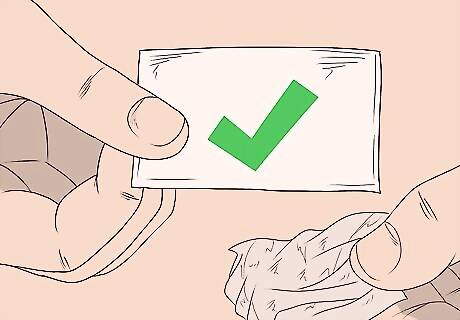
Check the area daily. Change the bandage if it gets dirty, wet, or loose. Keep an eye out for any signs of infection such as pus, swelling, red streaks, or warm skin.










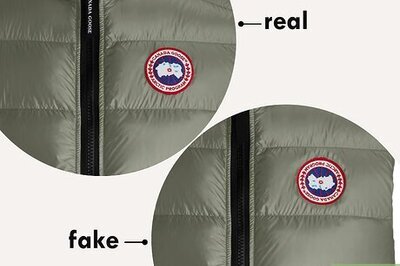
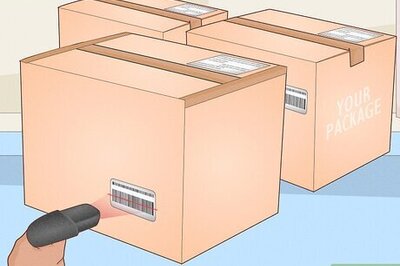

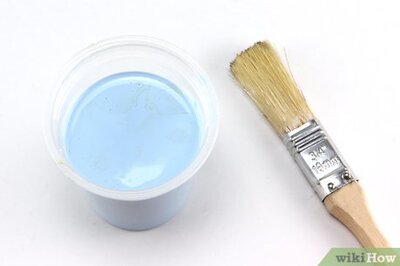






Comments
0 comment